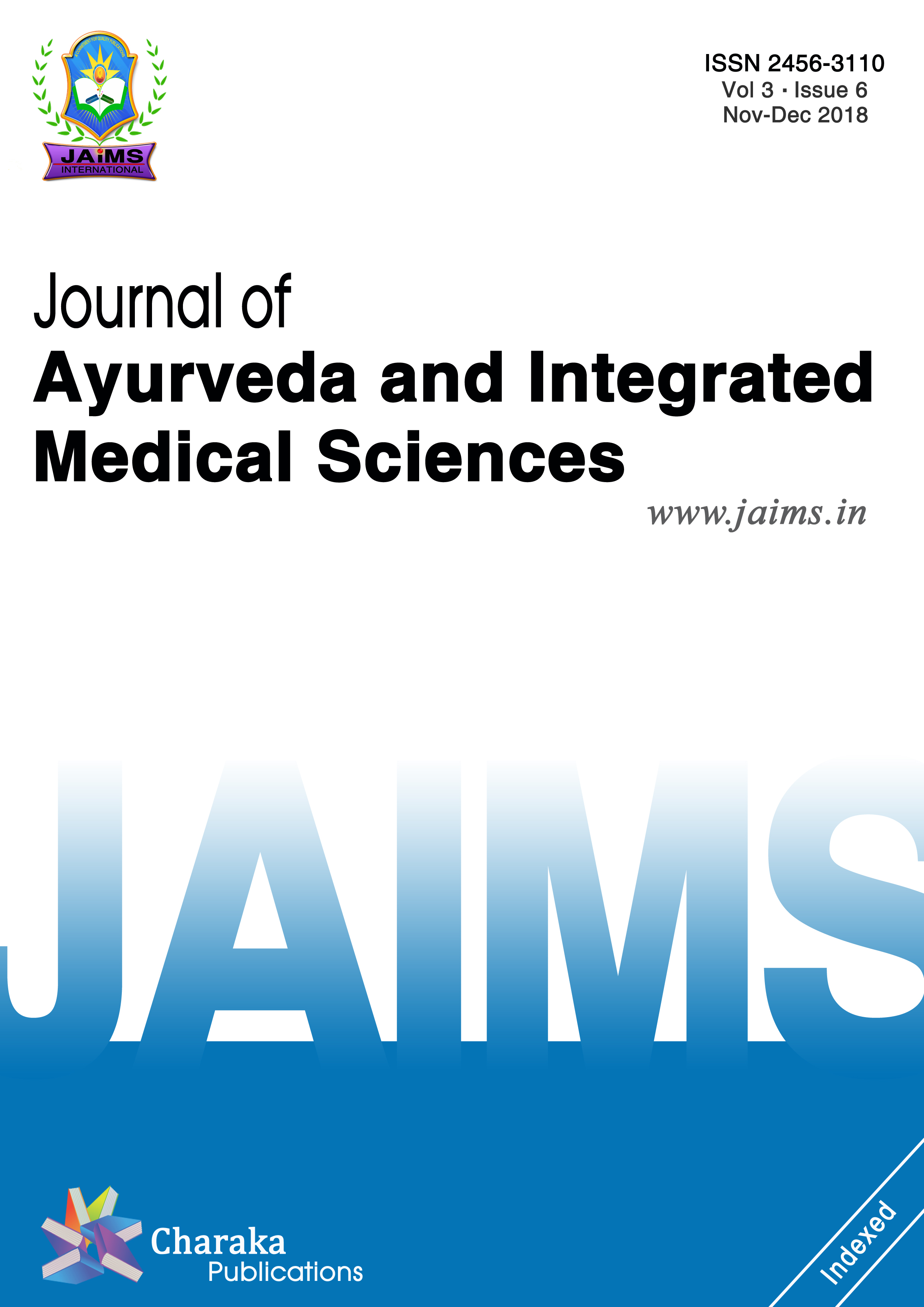Review on etiopathogenic trios in understanding Trigeminal Neuralgia with reference to Anantavata
DOI:
https://doi.org/10.21760/jaims.v3i06.547Keywords:
Anantavata, Ayurvedic treatment, Etiopathogenesis, Trigeminal neuralgiaAbstract
Trigeminal Neuralgia [TN] is a devastating and demotivating disorder which impairs daily functionality, Quality of Life and creates an overwhelming fear and depression in the patients. Despite numerous available pharmacological and surgical approaches, the results are not completely satisfying. Moreover, a number of patients become drug resistant, needing a surgical procedure to treat the neuralgia which in most cases results in pain recurrence. These facts reflect the lack of precise understanding of the TN pathogenesis.[1]The resemblances of TN with Ananthavata is mainly laid upon the precise clinical features and prognosis. Understanding the etiopathogenesis in Ayurvedic parlance will help in diagnosing and designing an appropriate management plan which is ultimately going to benefit a lot of sufferers from being immersed into an irreversible state of depression. Hence an attempt have been made to review the vitiating factors involved in this exemplary neuropathic pain.
Downloads
References
Love S, et.al. Trigeminal neuralgia: pathology and pathogenesis. Brain. 2001 Dec; 124 (Pt 12):2347-60.
Rappaport ZH et.al. Trigeminal neuralgia: the role of self-sustaining dischargein the trigeminal ganglion. Pain 1994;56:127–38
T.J.Nurmikko et.al. Trigeminal neuralgia - pathophysiology, diagnosis and current treatment British Journal of Anaesthesia, Vol 87, Issue 1, 1 June 2001, Pages 117–132
Liebig C, et.al. Perineural invasion in Cancer - A review of Literature. Cancer 2009:115-3379-3391.
Giorgio cruccuetal Trigeminal neuralgia: new classification and diagnostic grading for practice and research. Neurology 2016July12.87(2)220-228
M M Williams, A Sanskrit-English Dictionary, Sri Satguru Publishers, Delhi,Pg No:25
T C Parameswaran Moosath, Amarakosa with Parameswri Vyakhya, Kerala Sahitya Academy,2018 .Pg 288.















